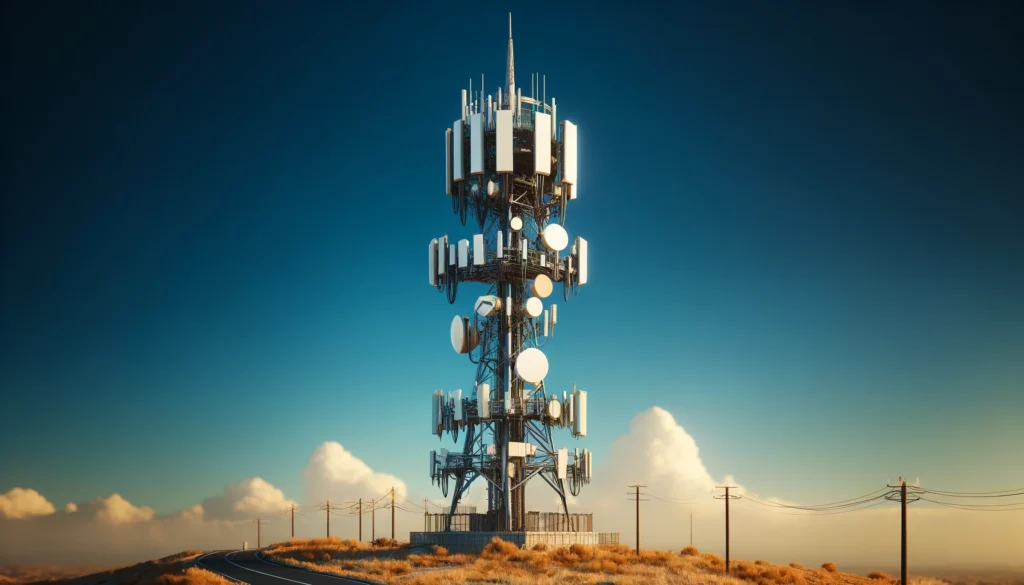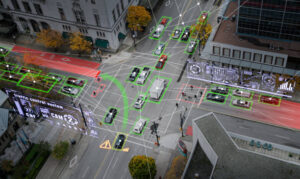The telecommunications landscape is transforming rapidly, with the sunset of 2G and 3G networks marking a significant milestone. This transition is crucial for making way for more advanced technologies like 4G and 5G, which offer superior speed, efficiency, and capabilities. In this article, we delve into the details of the 2G and 3G network sunset, its impact on IoT devices, and how businesses and individuals can prepare for and capitalize on this shift.
What is the 2G and 3G Sunset?

The 2G and 3G network sunset refers to the planned phase-out of these older mobile network technologies. Introduced in the early 1990s and 2000s respectively, 2G (second-generation) and 3G (third-generation) networks have been foundational in enabling mobile communications. However, with the advent of more advanced technologies, maintaining these legacy networks has become less practical.
Key Reasons for the 2G and 3G Sunset:
- Spectrum Reallocation: The radio frequencies used by 2G and 3G are being repurposed for 4G and 5G networks, which can handle significantly higher data rates and provide better service quality.
- Cost Efficiency: Operating multiple network generations simultaneously is costly. Shutting down older networks allows carriers to focus resources on improving and expanding newer technologies.
- Technological Advancements: Modern networks support more advanced features and applications that 2G and 3G cannot handle, such as high-definition video streaming, IoT, and augmented reality.
Impact on IoT Devices with 2G and 3G
The 2G and 3G sunset has substantial implications for IoT devices, many of which still rely on these networks. Devices ranging from smart meters to asset trackers and industrial sensors might lose connectivity, leading to operational disruptions.

Steps to Mitigate Impact:
When preparing for the 2G and 3G network sunset, it’s crucial to take comprehensive steps to mitigate the impact on IoT devices. Here are detailed steps to guide you through this process:
- Conduct an Inventory Audit:
- Inventory Check: Conduct a comprehensive audit of all devices currently relying on 2G or 3G connectivity.
- Device Categorization: Categorize devices based on their function, criticality, and connectivity requirements. This helps in understanding which devices are essential and must be prioritized during the transition.
- Dependency Mapping: Create a detailed map of each device’s network dependencies, including the frequency bands they operate on and any specific requirements for connectivity.
- Assess Compatibility:
- Firmware and Software Upgrades: Determine which devices can be upgraded to support 4G or 5G through firmware or software updates. Contact device manufacturers for potential upgrade paths and compatibility solutions.
- Hardware Replacement: Identify devices that cannot be upgraded and will require complete replacement. Research and select modern equivalents that offer improved functionality and compatibility with 4G and 5G networks.
- Vendor Support: Engage with vendors and suppliers to understand the lifecycle of current devices and to obtain support for upgrading or replacing them.
- Plan for Upgrades:
- Strategic Planning: Develop a strategic plan for transitioning devices to newer networks. This plan should include timelines, budget estimates, and resource allocation.
- Phased Implementation: Implement the upgrade in phases, starting with critical devices that have the highest impact on operations. This phased approach helps in managing risks and ensuring smooth transitions.
- Testing and Validation: Conduct thorough testing of upgraded or replaced devices in a controlled environment before full deployment. Validate their performance, connectivity, and compatibility with the new network.
- Training and Support: Provide training for staff and stakeholders on new devices and technologies. Ensure that technical support is available to address any issues that may arise during and after the transition.
- Monitoring and Optimization:
- Continuous Monitoring: Implement monitoring systems to track the performance and connectivity of upgraded devices. This helps in identifying and resolving issues promptly.
- Feedback Loop: Establish a feedback loop with users and stakeholders to gather insights on the performance of new devices and identify areas for further optimization.
- Future-Proofing: Stay informed about emerging technologies and trends in IoT and telecommunications. Continuously evaluate and adapt your strategy to ensure long-term compatibility and efficiency.
By following these detailed steps, businesses can effectively mitigate the impact of the 2G and 3G network sunset, ensuring a smooth transition to more advanced and efficient technologies. This proactive approach not only minimizes disruptions but also leverages the benefits of modern networks to enhance overall operations and capabilities.
How to Prepare for the Transition
Ensuring a smooth transition from 2G and 3G networks to more advanced alternatives requires meticulous preparation. Here are detailed steps to guide you through the process:
Evaluate Device Inventory
- Inventory Check:
- Conduct a Comprehensive Audit: Start by identifying all devices that currently rely on 2G or 3G connectivity. This includes creating a detailed list of devices, their functions, and their locations.
- Categorize Devices: Sort devices into categories based on their importance and use case. This helps in prioritizing which devices need immediate attention.
- Impact Analysis:
- Assess Operational Impact: Evaluate how the sunset of 2G and 3G will affect your operations. Identify critical devices that could cause significant disruptions if not upgraded.
- Identify Critical Devices: Pinpoint which devices are essential to your operations and need immediate transition plans to avoid downtime.
Explore Connectivity Options
- Technology Assessment:
- Research Alternatives: Investigate available connectivity options such as NB-IoT, LTE-M, and 5G. Consider factors like coverage, data requirements, latency, and power consumption for each option.
- Evaluate Performance: Compare the performance characteristics of each technology to determine which best meets your current and future needs.
- Learn More: For insights on the benefits of a technology-agnostic approach in IoT, visit our article on the advantages of being technology-agnostic for IoT.
- Future-Proof Solutions:
- Scalability and Longevity: Opt for technologies that not only meet current requirements but also offer scalability. Choose solutions that will remain viable and efficient as your needs grow and technology evolves.
Collaborate with Service Providers
- Consultation:
- Engage Providers Early: Communicate with your network providers to understand their timelines for sunsetting 2G and 3G. Gather information on recommended alternatives and their implementation strategies.
- Tailored Recommendations: Request provider-specific recommendations based on your unique device inventory and operational needs.
- Support:
- Leverage Expertise: Utilize the expertise of your service providers to facilitate a smooth transition. They can offer valuable insights and technical support to ensure your upgrade process is efficient and effective.
- Continuous Assistance: Ensure ongoing support from providers throughout the transition phase to address any issues promptly.
Strategize the Transition
- Phased Approach:
- Prioritize Critical Devices: Develop a phased plan that begins with the most critical devices. This approach minimizes risk and allows for more manageable stages of transition.
- Gradual Implementation: Implement the transition in stages, testing and adjusting as you progress to ensure stability.
- Budget Allocation:
- Plan Financially: Allocate a budget for device upgrades and new technology investments. Consider both immediate costs and long-term savings from improved efficiency and reduced maintenance.
- Cost-Benefit Analysis: Perform a thorough cost-benefit analysis to ensure that the transition plan is financially sound.
Implement and Test
- Pilot Testing:
- Small-Scale Trials: Conduct pilot tests with a subset of devices to validate compatibility and performance on the new network. This helps in identifying and resolving potential issues early.
- Feedback and Adjustment: Gather feedback from the pilot phase and make necessary adjustments before full deployment.
- Full Deployment:
- Careful Rollout: Once pilot testing is successful, proceed with the full-scale deployment. Monitor the process closely to ensure everything runs smoothly.
- Ongoing Monitoring: Continuously monitor the performance and connectivity of upgraded devices to catch and address any issues promptly.
By following these detailed steps, businesses can ensure a well-planned and effective transition from 2G and 3G networks to more advanced technologies, minimizing disruption and maximizing the benefits of modern telecommunications.
Opportunities Beyond the 2G and 3G Sunset

While the 2G and 3G sunset poses challenges, it also opens up new opportunities for innovation and improvement. Embracing newer technologies can lead to enhanced capabilities and operational efficiencies.
Benefits of Upgrading:
The transition from 2G and 3G networks to newer technologies like 4G and 5G offers several significant benefits. Understanding these advantages can help businesses make informed decisions and capitalize on the potential improvements.
Improved Performance
- Higher Data Rates:
- Speed: One of the most immediate benefits of upgrading to newer networks is the substantial increase in data transfer speeds. With 4G and 5G, data rates are significantly higher compared to 2G and 3G, enabling faster download and upload times.
- Efficiency: Faster data rates mean that tasks requiring large amounts of data, such as video conferencing, streaming, and downloading large files, can be completed more quickly and efficiently.
- Lower Latency:
- Real-Time Communication: Newer networks, particularly 5G, offer much lower latency than their predecessors. This is crucial for applications that require real-time communication, such as remote surgery, autonomous vehicles, and online gaming.
- Enhanced User Experience: Lower latency translates to a smoother and more responsive user experience, which is particularly important for applications that demand immediate feedback and interaction.
- Reliable Connections:
- Stability: 4G and 5G networks provide more stable and reliable connections, reducing the likelihood of dropped calls and connectivity issues.
- Capacity: These newer networks can support a larger number of devices simultaneously without compromising performance, making them ideal for densely populated areas and environments with high device density.
Advanced Features
- Real-Time Data Analytics:
- Enhanced Insights: The higher speeds and lower latency of 4G and 5G networks enable real-time data analytics. Businesses can gain immediate insights into operations, customer behavior, and market trends, allowing for more agile and informed decision-making.
- Operational Efficiency: Real-time analytics can help in optimizing processes, reducing downtime, and improving overall efficiency by providing up-to-the-minute data.
- Enhanced Security:
- Advanced Encryption: Newer networks come with enhanced security protocols and encryption methods, providing better protection against cyber threats.
- Secure IoT Deployments: For IoT applications, enhanced security features are crucial in protecting sensitive data and ensuring the integrity of connected devices.
- Integration with Modern Technologies:
- IoT and Smart Devices: 4G and 5G networks are designed to seamlessly integrate with the Internet of Things (IoT) and other smart technologies. This integration enables more sophisticated and interconnected applications, such as smart cities, smart homes, and industrial automation.
- Future-Proofing: Adopting newer network technologies prepares businesses for future advancements, ensuring that their infrastructure can support emerging applications and innovations.
Cost Savings
- Operational Efficiency:
- Reduced Downtime: The reliability and speed of newer networks reduce downtime and improve productivity, leading to significant cost savings over time.
- Streamlined Processes: Improved connectivity can streamline operations, reduce inefficiencies, and enable more effective resource management.
- Lower Maintenance Costs:
- Modern Infrastructure: Newer network technologies often come with modern infrastructure that requires less maintenance and is more resilient to issues compared to older systems.
- Long-Term Savings: Although the initial investment in upgrading to 4G or 5G may be substantial, the long-term savings from reduced maintenance and operational costs can be significant. Businesses can also benefit from lower energy consumption and improved sustainability with modern network equipment.
- Enhanced Business Opportunities:
- Competitive Advantage: Adopting advanced network technologies can give businesses a competitive edge by enabling new services, improving customer satisfaction, and opening up new revenue streams.
- Scalability: The scalability of 4G and 5G networks allows businesses to grow and adapt their operations without the need for frequent and costly infrastructure overhauls.
Sustainability
- Resource Optimization: Modern IoT solutions enable better monitoring and management of resources such as energy, water, and raw materials. This optimization helps reduce waste and ensures efficient use of resources.
- Environmental Impact: By utilizing IoT devices for monitoring environmental conditions, businesses can better manage their environmental footprint. For example, smart sensors can monitor air and water quality, leading to more proactive environmental management.
- Sustainable Practices: Implementing IoT solutions can support sustainable practices across various industries. For instance, in agriculture, IoT sensors can optimize water usage and reduce pesticide application, promoting sustainable farming practices.
- Long-Term Benefits: Adopting sustainable IoT solutions not only contributes to environmental preservation but also enhances a company’s reputation and compliance with regulatory standards.
Modern IoT solutions can also contribute to sustainability efforts by optimizing resource use and reducing waste. For more information on how IoT can drive sustainability, check out our article on IoT solutions for sustainability.
By understanding and leveraging these benefits, businesses can not only mitigate the impact of the 2G and 3G network sunset but also position themselves to take full advantage of the capabilities offered by 4G and 5G technologies.
Case Studies and Success Stories
To illustrate the benefits of transitioning to newer networks, consider the following examples:
Smart Cities
Several cities have successfully upgraded their IoT infrastructure to 4G and 5G, demonstrating significant improvements in various aspects of urban management. Here are some detailed examples:
- Traffic Management:
- Real-Time Traffic Monitoring: Upgrading to 4G and 5G allows cities to implement advanced traffic management systems that utilize real-time data from sensors and cameras. This data helps in monitoring traffic flow, detecting congestion, and optimizing traffic signals to reduce delays and improve overall traffic efficiency.
- Smart Traffic Lights: With faster and more reliable networks, smart traffic lights can communicate with each other and with central control systems to dynamically adjust timing based on real-time traffic conditions. This leads to smoother traffic flow and reduced emissions from idling vehicles.
- Enhanced Public Safety:
- Surveillance and Emergency Response: 4G and 5G networks support high-definition surveillance cameras and quick data transmission, which are crucial for monitoring public spaces and responding promptly to emergencies. The ability to stream high-quality video in real-time allows law enforcement and emergency services to act swiftly and effectively.
- IoT-Enabled Public Safety Devices: IoT devices such as connected fire alarms, environmental sensors, and emergency alert systems benefit from the reliable and fast connectivity provided by newer networks, ensuring that alerts and data are transmitted without delay.
- Efficient Utility Management:
- Smart Metering: Cities that have upgraded to 4G and 5G can deploy smart meters for utilities such as electricity, water, and gas. These meters provide real-time usage data, helping utility companies optimize resource distribution and reduce waste.
- Predictive Maintenance: IoT sensors connected via 4G and 5G can monitor the condition of infrastructure like water pipes, electricity grids, and public transportation systems. Predictive maintenance systems use this data to identify potential issues before they become critical, reducing downtime and maintenance costs.
Industrial IoT
Manufacturers adopting LTE-M and NB-IoT have reported significant gains in productivity, reduced downtime, and improved asset tracking. Here are some detailed examples:
- Increased Productivity:
- Automated Processes: LTE-M and NB-IoT networks enable manufacturers to automate various processes on the production line. Real-time data from sensors and machines can be analyzed to optimize workflows, reduce bottlenecks, and improve overall efficiency.
- Remote Monitoring and Control: With reliable connectivity, manufacturers can remotely monitor and control machinery and equipment. This capability allows for adjustments to be made on-the-fly, ensuring continuous production without the need for on-site presence.
- Reduced Downtime:
- Predictive Maintenance: Similar to smart cities, manufacturers benefit from predictive maintenance systems powered by IoT sensors. These systems monitor the health of machines and predict failures before they occur, allowing for planned maintenance and reducing unexpected downtime.
- Real-Time Alerts: IoT devices connected via LTE-M and NB-IoT can send real-time alerts to maintenance teams about potential issues, enabling quick response and minimizing the impact on production.
- Better Asset Tracking:
- Enhanced Visibility: IoT-enabled asset tracking systems provide real-time visibility into the location and status of assets such as raw materials, finished goods, and machinery. This visibility helps in optimizing inventory levels, reducing loss, and improving supply chain efficiency.
- Condition Monitoring: In addition to location tracking, IoT devices can monitor the condition of assets, such as temperature and humidity for perishable goods. This ensures that assets are maintained in optimal conditions throughout the supply chain.
These case studies highlight the transformative impact of upgrading to newer network technologies, demonstrating how smart cities and industrial IoT applications can benefit from enhanced connectivity, improved performance, and advanced features. By leveraging these technologies, cities and businesses can achieve greater efficiency, safety, and operational excellence.
Conclusion
The 2G and 3G network sunset is an inevitable step in the evolution of telecommunications. While it presents certain challenges, particularly for IoT devices, with proper preparation and strategic planning, businesses can not only mitigate the impact but also unlock new opportunities for growth and innovation. Embracing advanced technologies ensures better performance, future-proofs operations, and positions businesses to thrive in the ever-evolving digital landscape.
By understanding the nuances of the 2G and 3G sunset and taking proactive steps, you can navigate this transition smoothly and benefit from the advancements in modern telecommunications.






